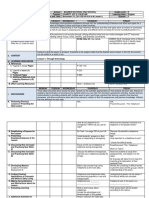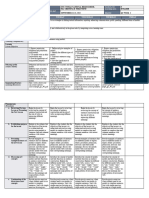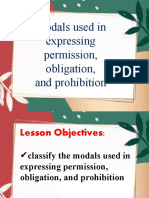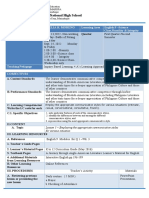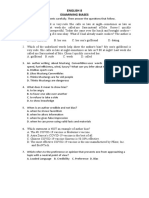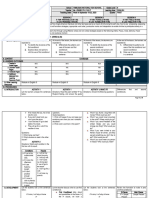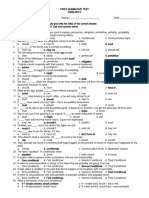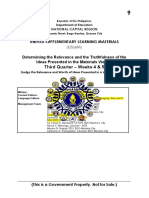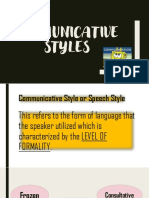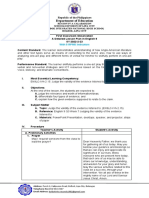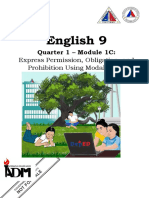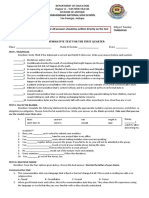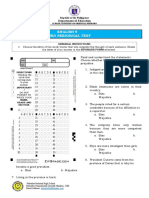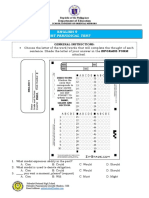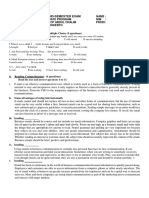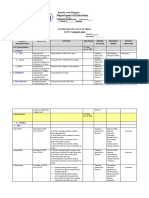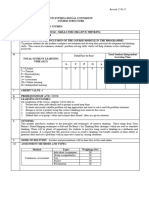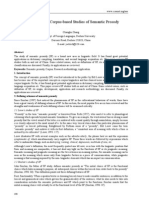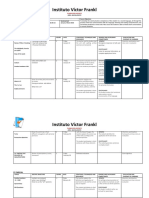0% found this document useful (0 votes)
167 views8 pagesENGLISH 9 Quarter 1 Week 5 and 6
The document provides information about different communicative styles: intimate, casual, consultative, formal, and frozen. It discusses the characteristics of each style and provides examples of situations where each would be appropriately used. Students are given activities to identify the best communicative style for different scenarios and sentences. The goal is for students to learn to choose the right communicative style based on the situation and people involved in the communication.
Uploaded by
Ar EyCopyright
© © All Rights Reserved
We take content rights seriously. If you suspect this is your content, claim it here.
Available Formats
Download as DOC, PDF, TXT or read online on Scribd
0% found this document useful (0 votes)
167 views8 pagesENGLISH 9 Quarter 1 Week 5 and 6
The document provides information about different communicative styles: intimate, casual, consultative, formal, and frozen. It discusses the characteristics of each style and provides examples of situations where each would be appropriately used. Students are given activities to identify the best communicative style for different scenarios and sentences. The goal is for students to learn to choose the right communicative style based on the situation and people involved in the communication.
Uploaded by
Ar EyCopyright
© © All Rights Reserved
We take content rights seriously. If you suspect this is your content, claim it here.
Available Formats
Download as DOC, PDF, TXT or read online on Scribd
/ 8











